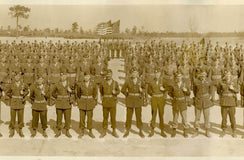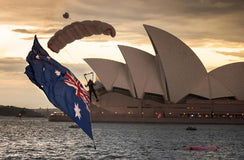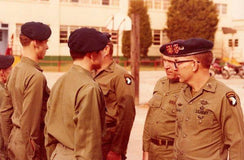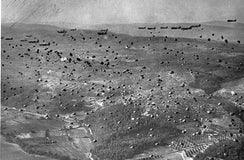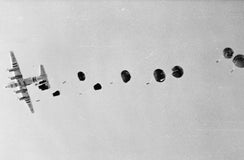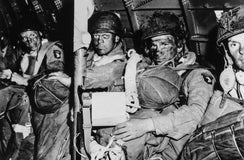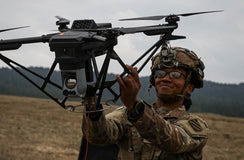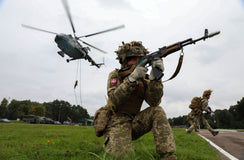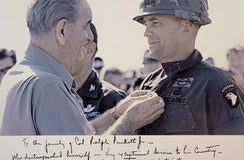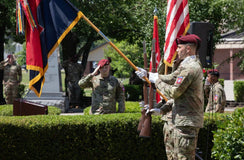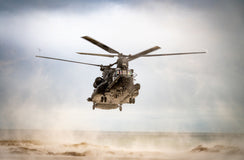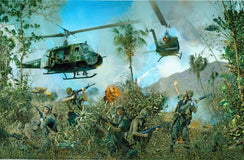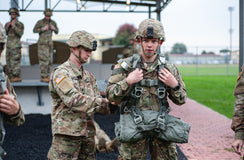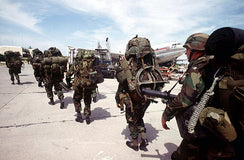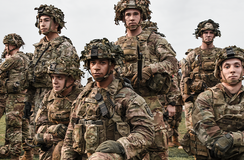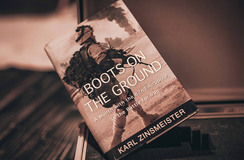First In France
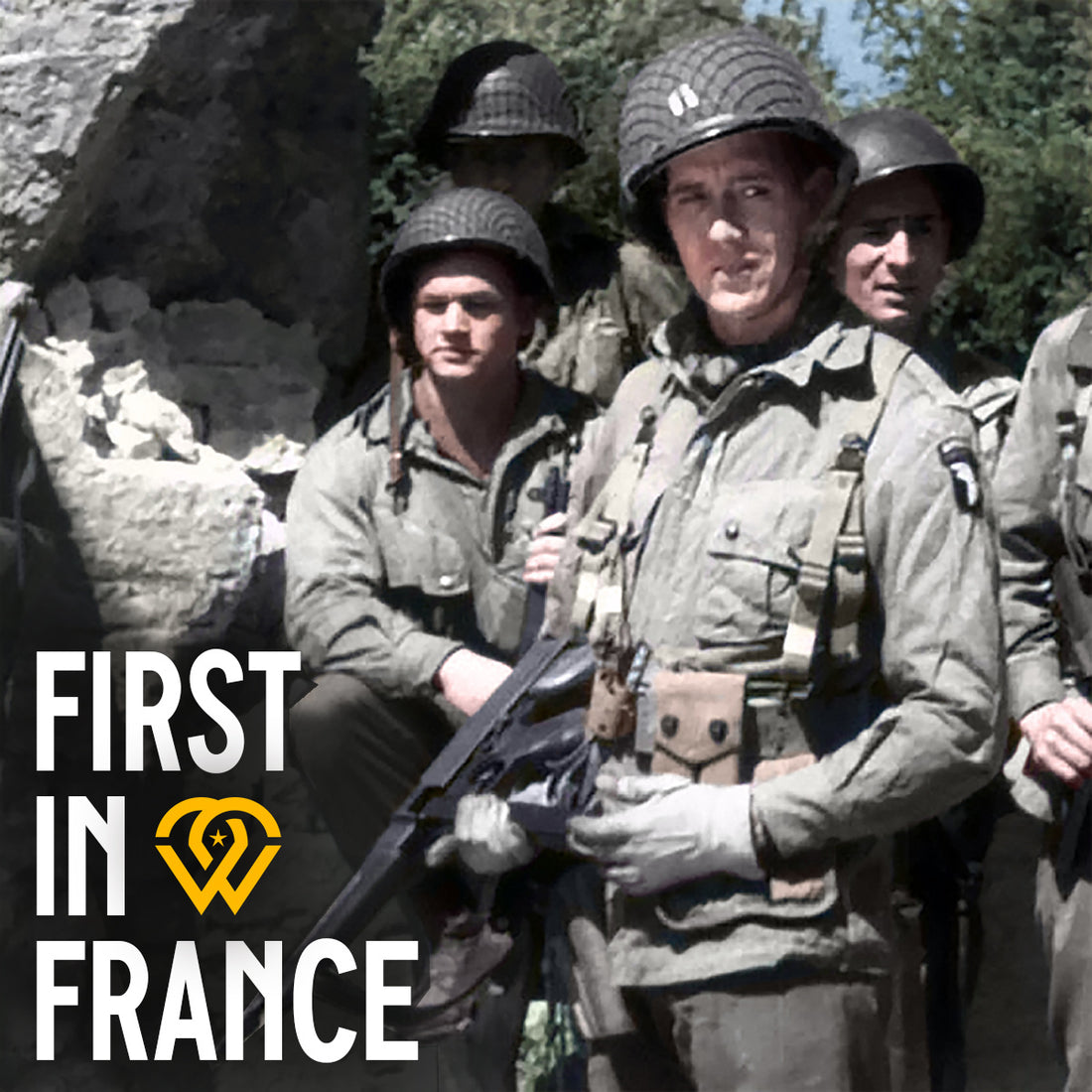
“Let’s convince the Krauts of the error of their ways”.
June 5th, 1944… the eve of D-Day, the largest amphibious invasion in human history.
Captain Frank Lillyman, commander of the 101st Airborne Division’s pathfinders, prepared his team for their harrowing assignment, to land on French soil before the main invasion, mark drop zones and terrorize the enemy infantry, armor, and HQs.
A few hours before, Lillyman had received the highly anticipated order that D-Day was a go. The lean 29-year-old from Skaneateles, New York State, received the orders with the grim satisfaction of a man who takes pride in his mission. And that mission was to take his men deep into Nazi occupied France, leading the first men to land in mainland Europe as part of Operation Overlord.
Captain Lillyman promptly told his sergeants to prepare their teams and subsequently burned the order, maintaining the utmost secrecy. The top brass stopped by, taking the chance for a photo op with Lillyman and some of his men, a press opportunity that simply couldn’t be missed.
The next few hours likely passed in tense blur as Lillyman and his men prepared their weapons and equipment, applied camouflage and shared coffee and cigarettes.
Medics handed out pills for air sickness, and bags for the men to throw up in, and they began boarding the C-47 transport planes. Lillyman cut a menacing figure as he stood in the doorway of his C-47, signature stogie hanging from his mouth. He wore white leather gloves and his Tommy gun hung from his left leg, just above his vicious M-3 trench knife, the blade sharp enough to sing. And soon it would.
The cigar itself was a superstition, and a kind of mascot for the whole unit. Lillyman explained that “on my first jump, I happened to have a cigar. So, I’ve done it ever since. Now the boys attach a lot of importance to that cigar”.
Shortly after midnight on June 6th, Lillyman became the first Allied soldier to jump into the darkness above France, his men following close behind. Their objective was to mark out Drop Zone A, inland from Utah Beach, placing amber lights which would direct waves of planes and the men of the 502nd Parachute Infantry Regiment.
Lillyman landed in a dark field, shapes moving about him… tense, he loaded his Tommy gun. A gentle moo announced that he was in fact surrounded by cows and not Germans, and he let out a sigh of relief. Using their small metal clackers, called crickets, Lillyman and his men quickly came together. Analyzing maps, Lillyman realised that with just 30 minutes until the 502nd would arrive, they wouldn’t have time to reach the previously agreed coordinates.
Improvising, Lillyman elected to use the surrounding fields as the drop zone and ordered his men to begin placing the amber lights. But before they began, machine gun fire tore through the peace and quiet. Captain Lillyman dispatched two of his men to deal with these Germans. Shortly after, grenade's and gunfire went off and then all was quiet, the threat eliminated, for now. The team would have to move quickly before the patrols and quick reaction forces would respond to the gunfire.
The Pathfinders quickly placed the lights and Eureka sets, radios which would guide the Airborne troops, with the help of a nearby church… the top of the steeple was the perfect spot for a Eureka set. They quickly completed their objective and now, all they could do was wait.
Little did he know, most of the Pathfinders landed well away from their designated zones. However, it was a more successful operation than the main drops, which were extremely chaotic. Many troops from the 82nd and 101st Airborne drowned in flooded fields, shot in trees, and landed miles from their drop zones. The 101st and 82nd would fight as "LGOPs" for days before they could reform into their original ranks.
Late on the 6th of June, the men of the 101st were running low on supplies. 32 British Horsa gliders were dispatched from England, with much needed ammunition, men and heavy equipment. But a suitable landing area was needed… and who better to find it than Frank Lillyman?
The leader of the Pathfinders quickly found a suitable field that was large enough to fit the gliders. He and his men placed the lights and Eureka sets, and around 9pm the gliders began to descend towards the field… and were met by heavy fire from camouflaged enemy troops who had been lying in wait!
Gliders were still able to land and many crashed into the field. Lillyman dashed to help the crew of a crashed glider and was shot in the arm. Quickly after, shrapnel lacerated Lillyman’s face and he collapsed, and was taken to an aid station for treatment. The supply operation was success despite the German ambush, largely thanks to Lillyman’s efforts.
The Captain was evacuated to England, but not for long… the top brass (and his doctors) simply couldn’t keep him out of the war. In fact, Captain Lillyman snuck out of his hospital without permission, found his way onto a supply ship and returned to Normandy, where he rejoined his men. A short time later, a grinning Lillyman appeared in news footage with his men, hefting his Tommy gun! He didn’t want to be anywhere else in the world.
It wasn’t all fun and games though - Maxwell Taylor, commanding general of the 101st was not impressed with Lillyman’s disregard for authority and subsequently transferred him to 3rd battalion in the 502nd Parachute Infantry Regiment. Captain Frank Lillyman was no longer a Pathfinder.
Lillyman remained right in the action throughout the rest of the war. He and his men sought fire and brimstone in Operation Market Garden, and fought off the desperate German armor in The Battle of the Bulge. Lillyman survived the war and returned to New York City in 1945.
The first man in France died of a stroke at the age of 55 and was remembered in the New York Times as “much honored as the first American paratrooper to drop behind German lines during the Normandy invasion in WWII”.


